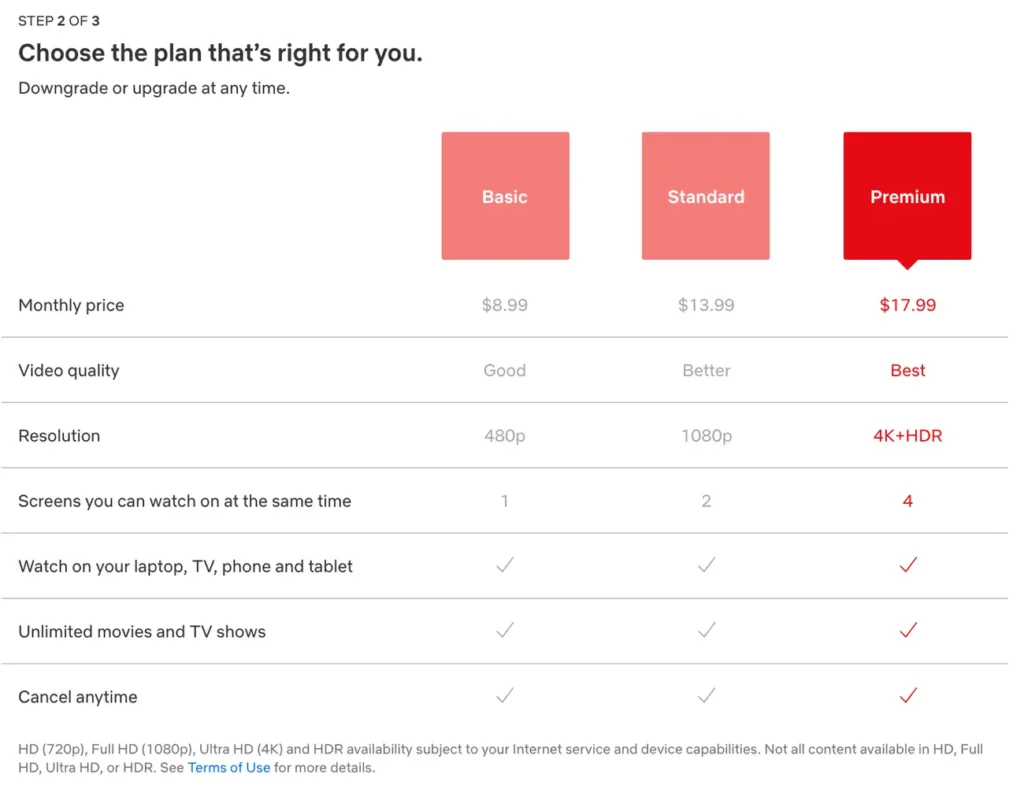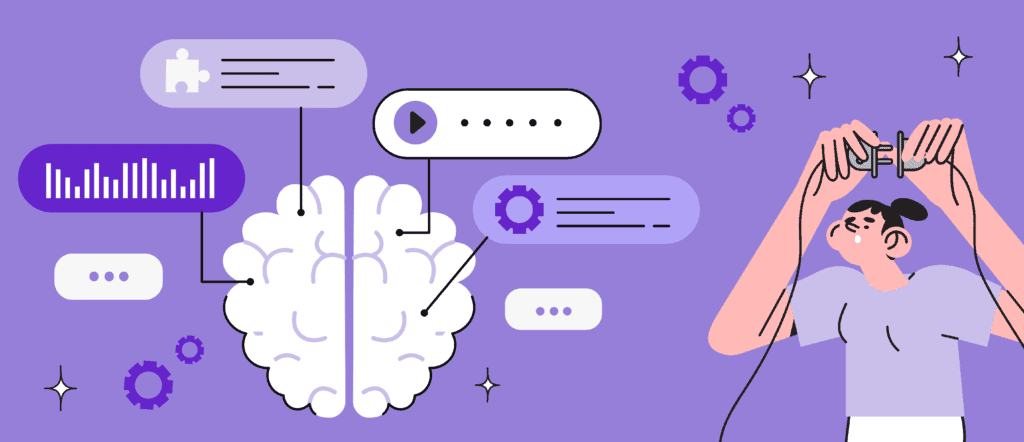We’ve all heard the saying, “The customer is always right.” But what if your business could anticipate and understand your customers’ needs before even they are fully aware of them?
Sounds too good to be true, right? It doesn’t have to be. To all those who don’t believe me, I offer you one word: neuromarketing.
Neuromarketing is emerging as a way for companies to apply the brain’s responses to stimuli to their marketing strategies so they have a greater impact on their target audience. Understanding the “why” behind your customers’ choices and preferences might just be what makes the difference in your next marketing campaign.
Through neuromarketing, businesses can gain invaluable insights into the emotional and cognitive processes that underpin customer decision-making. At its core, neuromarketing seeks to bridge the gap between what customers think they want and what they truly respond to on a subconscious level.
Leveraging these psychological tactics in your brand’s copy and graphics can revolutionize your marketing game, driving engagement and helping to get those straggling customers over the finish line.
Overwhelmed? You aren’t alone. Allow me to be your guide… (*cues “Pure Imagination”*)
What is Neuromarketing?
At its most basic level, neuromarketing—sometimes called consumer neuroscience—studies how the human brain reacts to different marketing tactics. It is a subsect of consumer behavior analyses and goes a step further than traditional CRM reports.
It can be used to anticipate (or, more fraudulently, to manipulate) consumer behavior and has been gaining support over the past five or so years as a valuable tool for businesses. Emerging as marketers sought a deeper understanding of consumer decision-making processes, it has evolved into a powerful tool in the age of digital marketing.
Basic principles include the role of emotions, cognitive biases, and the brain’s reward system in shaping consumer choices. It allows marketers to tailor their strategies and campaigns by comprehending how the brain responds to their targeting efforts.
GSRs, EEGs, and FMRIs, Oh My!
No, this isn’t something out of a sci-fi film (though, admittedly, it does sound like it). Galvanic skin response (GSR), electroencephalography (EEG), and functional magnetic resonance imaging (fMRI) are all tools that neuroscientists use to track the effects of a particular marketing campaign.
These tests track psychological reactions, like changes in blood flow and more, to help understand consumers’ brains. Each of them gives scientists—and later marketers—a better understanding of what exactly is occurring in the brain on both a conscious and subconscious level when it is exposed to various stimuli and completes different activities.
And the data is priceless. Big-name companies like Hyundai and PepsiCo use them to gauge consumer reactivity to new features, packaging, and more before they launch. It is because of information like this that Frito-Lay switched from shiny to matte packing on their potato chips. One of their studies revealed that the latter led to reduced activity in the part of the brain that manages feelings of guilt.
Psychological Tactics of Neuromarketing
Even if you don’t have the time and resources to run your own prototype tests on your ideal clients, a wealth of information is available on how consumers in different demographics respond to various marketing tactics. With this said, gathering all this information is one thing, but applying it is a whole new beast.
Adjusting your marketing strategies based on the research is the single most crucial step to neuromarketing. But, it also introduces questions of ethics: is using this information the “right?” Sometimes yes, sometimes no.
Scarcity and Fear of Missing Out (FOMO)
FOMO is a powerful psychological tactic for driving consumer behavior. By emphasizing exclusivity, limited-time offers, or unique opportunities, marketers create a sense of urgency that drives consumers into a frenzy. When something is in demand, it’s more attractive—you always want what you can’t have.
Understanding and effectively leveraging FOMO can significantly enhance the impact of marketing messages. Creating the perception of product scarcity or limited availability (short-term sales, low stock alerts, etc.) is frequently used in marketing to push some hesitant customers through the sales funnel.
Frequency Bias
Also known as the Baader-Meinhof phenomenon, frequency bias is the term used to describe how consumers form preferences for—and, later, trust—brands that they are exposed to more often. This can be applied to your marketing tactics in a million different ways, but is most commonly used by companies through cookies. Cookies track consumer activity online and then use the data they collect to tailor advertisements for each user. So, if you’ve ever thought your phone could read your mind, you weren’t so crazy after all.
Consistent brand exposure directly impacts consumer trust and loyalty. Understanding frequency bias helps marketers fine-tune their campaigns for optimal visibility without causing fatigue. While repetition builds recognition, it’s crucial to strike a balance to avoid overwhelming or desensitizing your audience.
Related Zen Blog: Meaningful over Measurable: Not All Metrics are Created Equal
Goldilocks Effect
You know the story with the three bears? Let’s channel that, minus the breaking and entering…
The Goldilocks Effect is when a company uses a comparative analysis of their product or service mirrored against themselves or their competitors. This can frame their features to seem like a perfect fit for a customer’s specific desires (not too big, not too small, but *just* right).
You may have seen this recently from Netflix after they raised subscription prices and limited account sharing. They now present their “Premium” tier—their most expensive—as the best bang-for-your-buck subscription package. Even if it isn’t the right fit for you, it makes you feel like it is. Clever, right?

Strategic Product Placement
How you place products—whether in-store or online—is a delicate but incredibly important process. Strategic positioning can capture attention, guide focus, and impact consumer interest and buying habits. Studies have shown that shelf placement in stores can drastically impact sales, with preference going to the middle shelf.
The key is integrating your products organically and without drawing attention. As is the case with frequency bias, consumers are more likely to trust and purchase products that appear in their favorite show, for example, even if they don’t realize it. Skillful product placement can turn a casual viewer (or binge-watcher) into an engaged consumer.
Don’t believe me? Just look at the Coca-Cola and Stranger Things partnership of 2020. The show’s third season had an estimated product visibility value of $15 million and led to a $1.83 million increase in sales for the soda company. The most impressive part? The brand was featured for nearly a half hour in two episodes alone, and most audience members didn’t even realize it was happening.
Is Neuromarketing Ethical?
While this is all very interesting, it can get a bit muddy. Ethical applications of neuromarketing are dependent on balancing persuasion and manipulation, which can easily be blurred. Striking a balance is essential for building long-term trust with consumers and maintaining a positive brand image.
You never want customers to feel duped—this is the quickest way to lose their business as soon as you get it. Businesses and marketers must be conscious of the importance of consumer autonomy and ensure that their campaigns and tactics are transparent and respectful. Empowering consumers to choose your brand instead of feeling tricked into buying in is the be-all-end-all of brand loyalty, trust, and reputation.
How Does All This Influence Campaign Strategy?
Neuromarketing enables marketers to create more personalized and targeted campaigns. By understanding the preferences and behaviors of your target demographics, campaigns can be tailored to resonate with specific audience segments and increase their effectiveness.
Aligning marketing strategies with consumer needs and preferences enhances the overall customer experience. Crafting campaigns that speak directly to the desires and preferences of your target demographic ensures a positive and memorable brand experience. Leveraging these tools can help brands connect with their audience on a deeper level and foster loyalty and satisfaction.
Neuromarketing can be an impactful new approach to how we structure campaign strategies. By understanding the psychological nuances that influence consumer perceptions and buying habits, companies can revolutionize their marketing strategies, creating campaigns that not only capture attention but resonate deeply with their target audience.
Personalization is the future of marketing, and neuromarketing provides the tools to make it a reality. But with great power comes great responsibility. As we continue to delve into the mysteries of the human mind, the future of marketing holds exciting possibilities for those willing to ethically embrace the neuro-revolution.




